Monk Fruit sweeteners have been gaining popularity in recent years. In this review, you will learn more about this sweet sugar alternative, and which specific products I am currently enjoying. If you're looking for the best monk fruit sweetener or are curious about the products that don't increase your blood sugar levels, keep on reading.
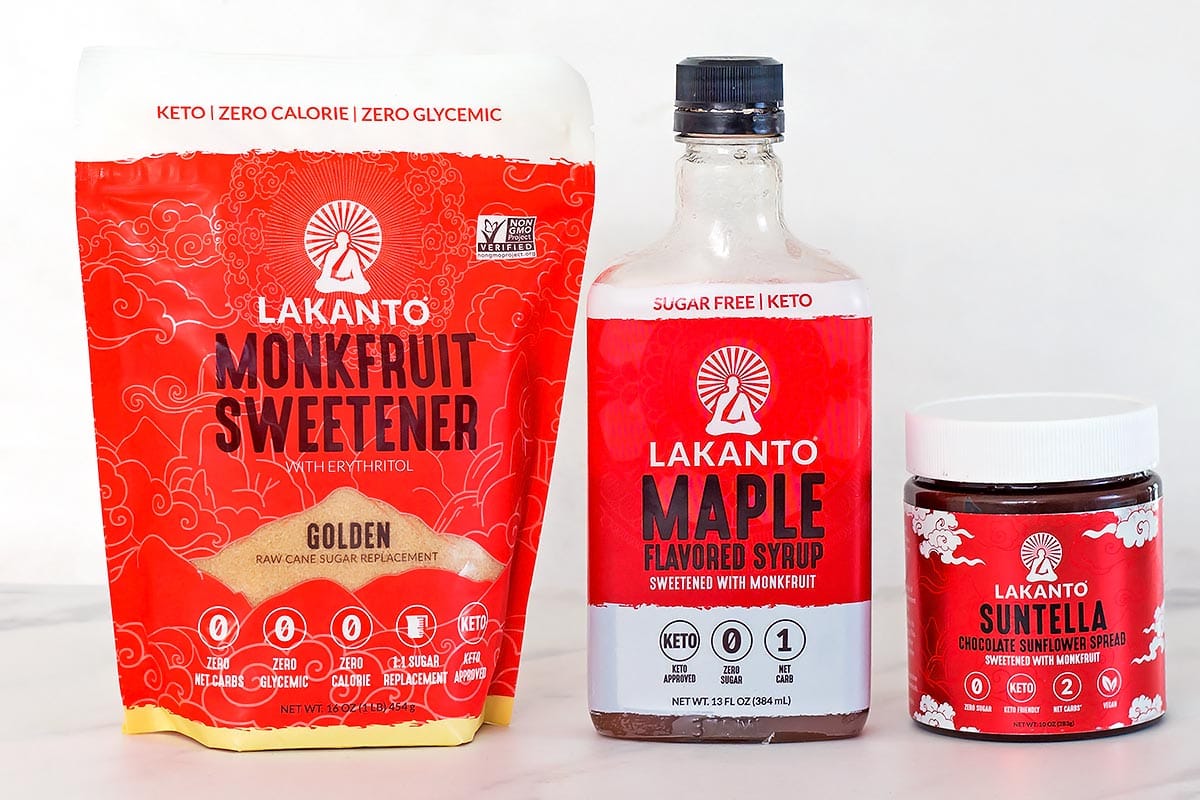
High-sugar diets have been linked to several chronic illnesses including obesity and Type 2 Diabetes. According to the American Heart Association, men should not consume more than 9 teaspoons of added sugar per day. Women, on the other hand, shouldn't consume more than 6 teaspoons per day. However, if people can avoid it altogether, it might be more physically and mentally beneficial.
You don't have to live a bland life though because there is a natural sweetener out there that you can substitute your sugar with. Have you ever tried monk fruit as a sweetener? Currently, I am enjoying Lakanto's Monk Fruit Sweeteners as well as some of their other products. Let me tell you why I like monk fruit sugar substitutes and which specific products I use.
Why is Monk Fruit Sweetener a Popular Alternative to Sugar?
Monk Fruit, also known as lo han guo or Swingle fruit (Siraitia grosvenorii), is part of the gourd family and is native to Southern China and Northern Thailand. The monk fruit itself has been used for hundreds of years in traditional medicine, but it slowly captured the attention of the market when the Food and Drug Administration (FDA) approved its use as a sweetener in 2010.
So, what's so special about monk fruit? It is still a fruit so it naturally has glucose and fructose. However, its sweetness doesn't come from its natural sugars. Its sweet taste comes from its mogroside content. Mogrosides are glycosides from plants. Each monk fruit contains different amounts of mogrosides, meaning the more mogrosides it has, the sweeter it tastes.
There's a process for extracting these glycosides. But, basically, when the fruit is processed into juice, the mogrosides are separated from the natural sugars - glucose and fructose.
What's interesting is the extract is about 100 times sweeter than sugar! So, commonly, to control and balance the level of sweetness, manufacturers add in other natural ingredients like erythritol - a sugar alcohol that's commonly used as a food additive and sugar substitute. Erythritol is made from corn using enzymes and fermentation.
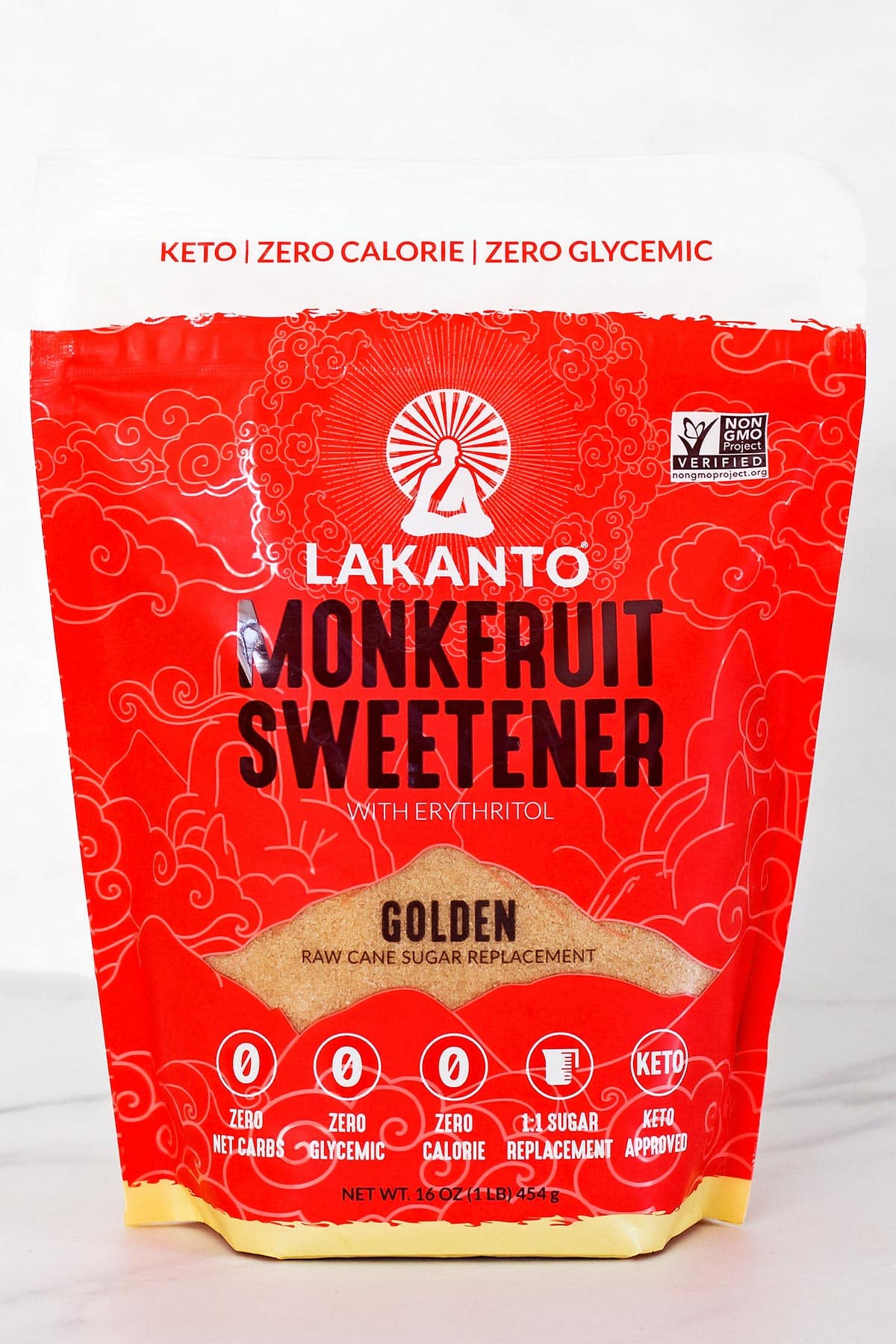
The Lakanto Proprietary Blend
As for Lakanto, the company also formulated its proprietary blend of monk fruit extract and erythritol, making its most popular monk fruit sweetener: the Classic Monkfruit 1:1 Sugar Substitute. If you're more into raw cane sugar, you can check the Golden Monkfruit 1:1 Sugar Substitute.
What I love about the Lakanto sweetener with monk fruit is that it has zero calories. Its glycemic index is also zero. It's the right blend of Monk Fruit Extract and erythritol, with no fiber, no maltodextrin, and no artificial flavoring or sweeteners.
Who is Lakanto?
Lakanto is an international company that produces alternatives to regular table sugar. Not only that, but it has created alternatives to products that normally have high sugar content, like chocolate spread, chocolate syrup, maple syrup, matcha latte, coffee syrup, and so more. In their online store you will find products that you would typically buy from the supermarket, but sugar-free and sweetened with monk fruit extract.
Of course, the main ingredient of ALL of their products is Monk Fruit. They consider all of their items to be healthier alternatives with a low or zero glycemic index, keto-friendly, vegan-friendly, all-natural, and with no side effects. Their natural sweetener that can replace sugar, in particular, is great for sweetening beverages, or it can be used to sweeten baked goods without spiking up your blood sugar levels.
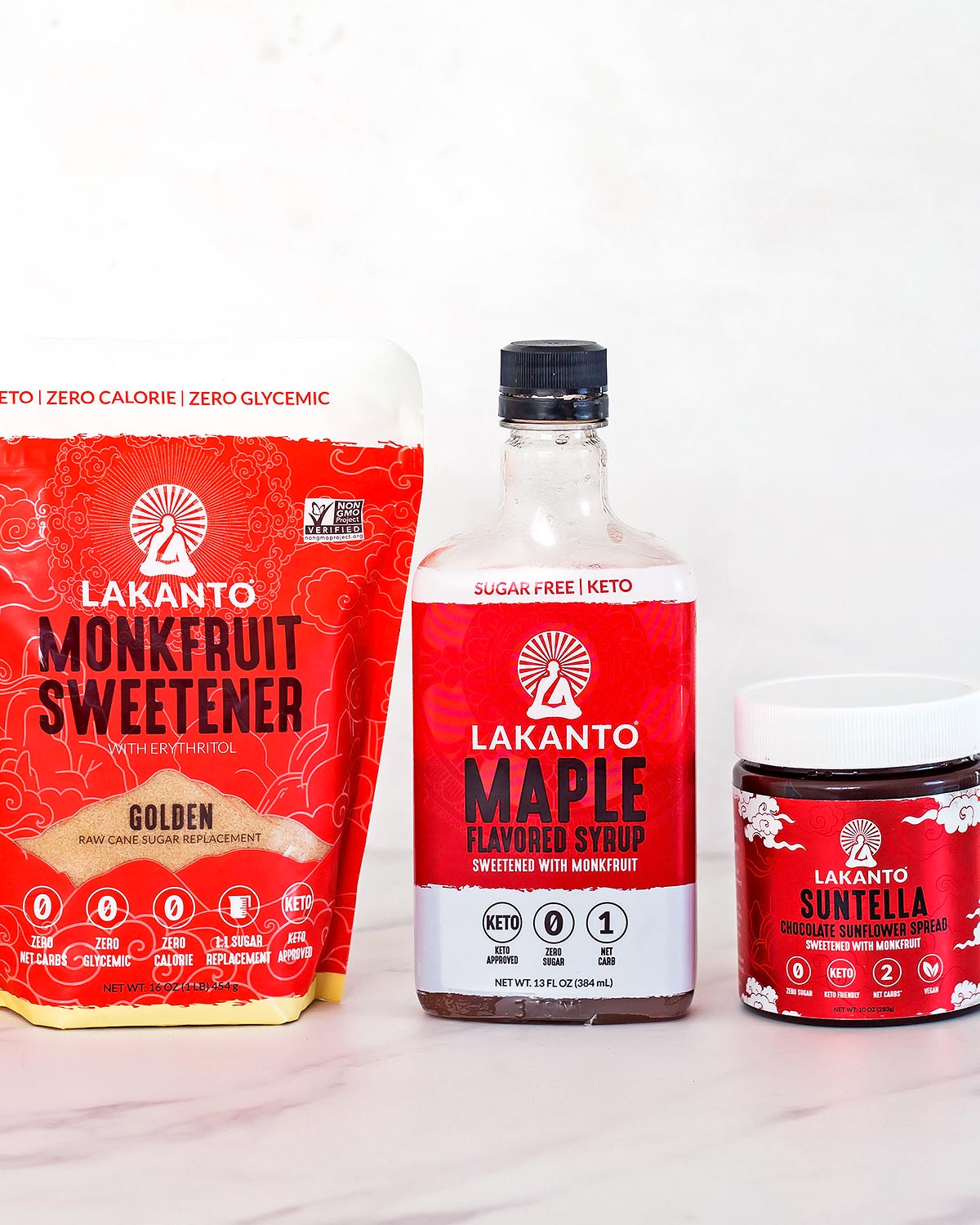
Where does the monk fruit come from?
So where does Lakanto get their monk fruit from? It seems that they are growing it in-house. According to their website, they grow the monk fruit way up high in the mountains, miles away from the city.
It is a bit challenging to grow monk fruit. Based on my research, the vines (yes, monk fruit grows from vines) need very specific conditions to survive, be healthy, and produce good quality monk fruit. It needs high humidity and high temperature-difference between night and day, among other things.
The farmers in Lakanto's monk fruit farm make it a point to take care of the plant. Their farming practices have been the same for centuries. They do not use chemical pesticides, and they plant, pollinate, and harvest the monk fruit by hand.
Are Monk Fruit Sweeteners Safe to Ingest?
As mentioned, Monk Fruit Sweeteners have been approved by the FDA as GRAS or generally recognized as safe in 2010. For Lakanto, the fruit sweetener, as well as the other products they have, are lifestyle-friendly which means that they are sugar-free, vegan-friendly, low or zero calories, and keto-friendly. It's also safe for kids. The fruit extract adds some sweetness, but without the added side effects, calories, or risk for cavities.
However, the sugar alcohol erythritol that Lakanto uses in their blend can have some side effects in sensitive people or if consumed in high amounts. For some people these side effects include bloating, flatulence, and diarrhea. Because sugar alcohols don't get broken don't by the body, fermentation can occur in the intestines and produce gas and can cause gastrointestinal distress. Some research indicates that one has to consume more than 18 grams for any problems to occur. But of course this can vary depending on individual sensitivity.
What does the Lakanto Monk Fruit Sugar Substitute Taste and Look like?
The sugar substitute looks just like ordinary table sugar. Compared to other sugar substitutes, the Lakanto Monk Fruit Sugar Substitute is finer and has the same granular consistency as table sugar. If your eye is not trained, you might not even tell the difference in terms of appearance.
Lakanto's Monk Fruit Sweetener also tastes like sugar. From my experience, the monk fruit sweetener I am using (the Golden version), tastes very similar to raw cane sugar. Dissolved in a drink I can taste no difference. In baked goods, I tend to notice a slight cooling effect in my mouth which actually comes from the erythritol dissolving.
The magic ratio for the Lakanto Monk Fruit Sweetener is 1:1, which means that one tablespoon of monk fruit sweetener will taste just as sweet as one tablespoon of regular sugar. Although it is 100 times sweeter than table sugar, its taste has been adjusted accordingly. Just with tasting the Golden Monkfruit Sweetener, I think that the claim is pretty accurate. But, again, taste is subjective for people so what might be just the right amount of sweet for me may not be enough or it may even be too much.
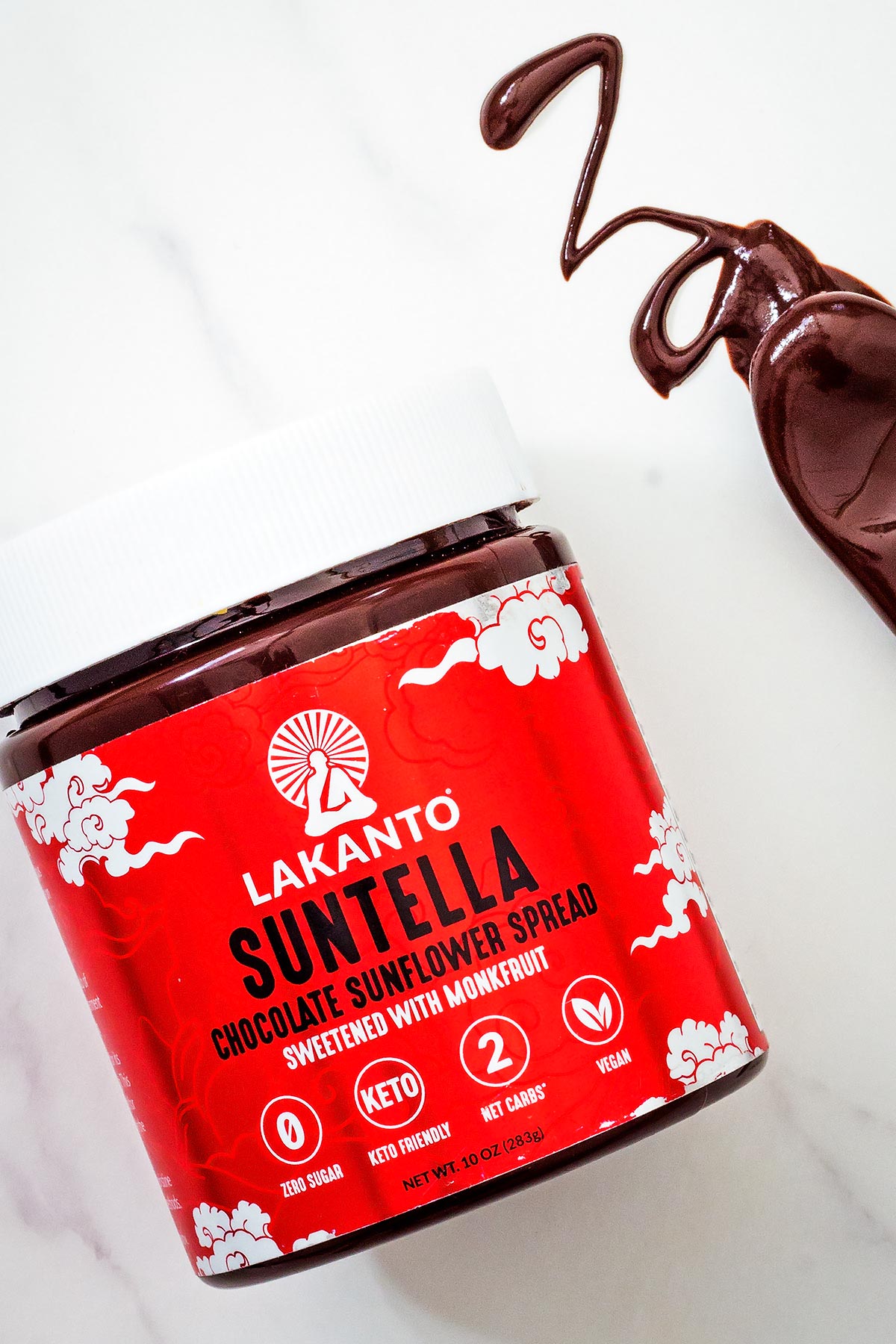
Where to Buy Lakanto Products
Lakanto products are becoming widely available in North American markets. Of course, you can find them on Amazon, which used to be the only way I had access to it. But this year even my local supermarket here in Mexico started carrying 3 different Lakanto products.
For the best selection and savings, I recommend ordering from the official Lakanto website where they regularly have sales on different items.
>> Also, you can save 20% OFF your online order by using my code LEELA at checkout!
What I am Currently Loving
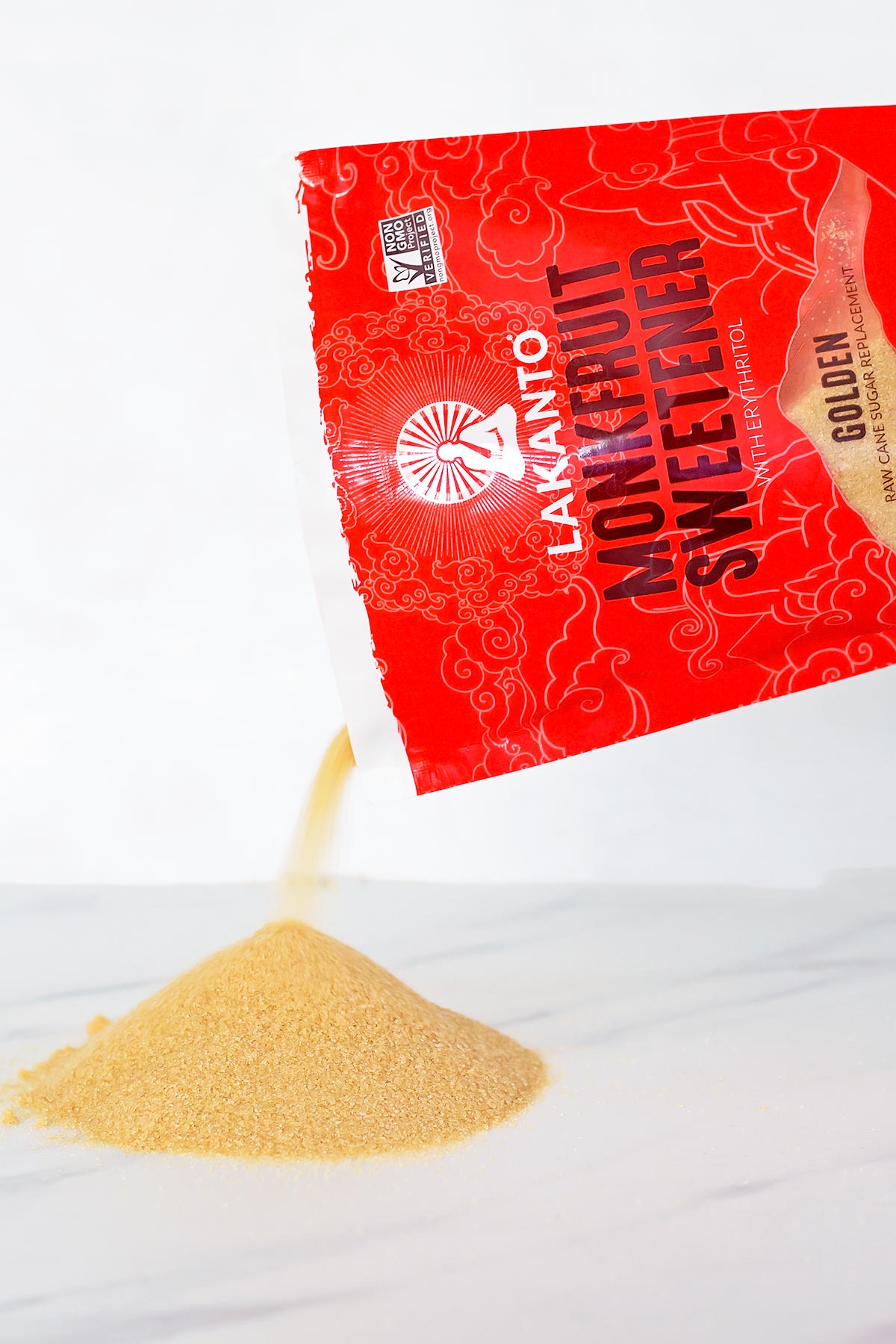
Golden Monk Fruit Sweetener
I like to use the Golden version of Lakanto's Sugar Substitute in baking recipes that otherwise call for granulated cane or brown sugar, or coconut sugar. Many of my coconut flour or almond flour recipes can be low carb or keto friendly, if a sugar-free sweetener is used. I recommend this granulated monk fruit sweetener in recipes like my Coconut Flour Cookies and Almond Flour Brownies.
>> Check it out here! Prices start at $6.99 (save 20% OFF with code LEELA)

Lakanto Maple Flavored Syrup
I couldn't believe that this maple-flavored syrup only has 1 NET CARB per serving. If you want a sugar-free pancake breakfast, then this is one of the greatest alternatives. Both diabetics and people who are on a vegan or keto diet can now enjoy maple syrup-like goodness with monk fruit extract. They don't have to break any of their goals or break their lifestyle. It's perfect on top of my coconut flour pancakes!
What's in it?
Lakanto's Maple Flavored Syrup contains purified water, tapioca fiber, chicory root inulin, potato starch, natural flavors, vegetable glycerin, natural flavors, sea salt, monk fruit extract, fruit juice, and natural citrus extract as a preservative.
How do I know all of its ingredients? It's all on the website which I appreciate. It feels like Lakanto has nothing to hide because all of the ingredients are there in plain sight.

What else can you use it for?
Since you get sugar-free syrup that is as close to the real thing when it comes to taste, you can also use it the same way. You can even add it to your oatmeal, coffee, or tea to add that maple flavor.
It is also great as a baking ingredient in recipes that otherwise call for liquid sweetener like honey or maple syrup. Try it in one of my coconut flour muffin recipes or my healthy Pumpkin Quick Bread.
Best Part
I haven't gotten to the sweetest part yet. Because Lakanto believes in their product so much, they're offering a risk-free guarantee. If you don't like the syrup, for some reason, they can refund your purchase happily.
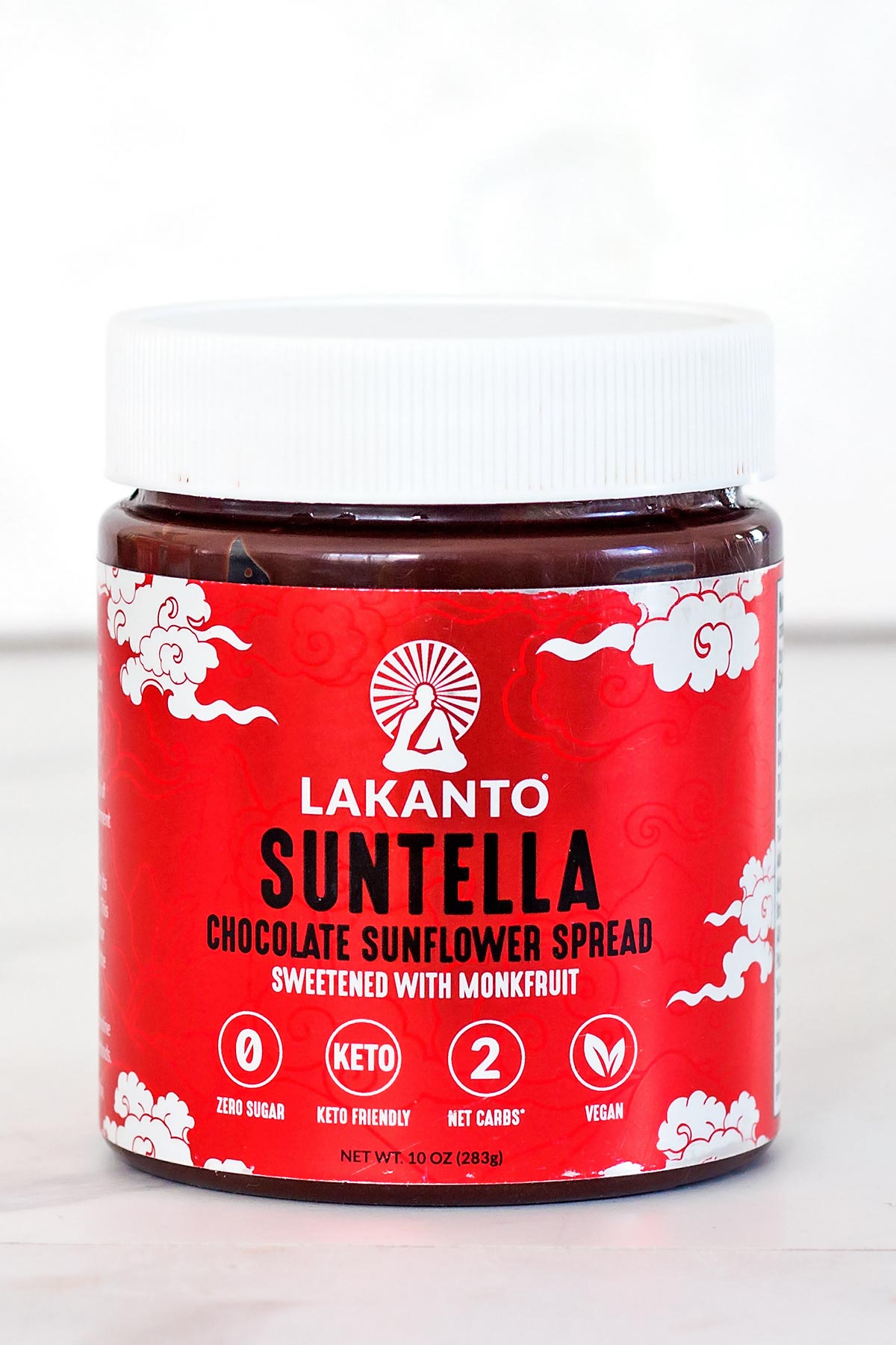
Sugar-Free Chocolate Spread
This next one I am so excited about because it's a chocolate spread. It's playfully named Suntella which sounds very much like another popular chocolate spread in the market with loads of sugar and palm oil. The Suntella was received in my home with open arms - my daughter loves it so much. I feel comforted knowing I am not giving her a sugar-loaded snack. And a little actually goes a long way to flavor and sweeten bread slices, oatmeal, or pancakes.
What's in it?
All that's inside the Suntella Chocolate Spread are sunflower seeds, non-GMO Lakanto Monkfruit Sweetener (Erythritol and Monk Fruit Extract), coconut oil, Dutched cocoa, sugarcane fiber, Calcium Carbonate, natural chocolate flavor, sea salt, and sunflower lecithin.
Again, all of these ingredients can be easily found on the chocolate spread's product page. You'll easily see them on the side panel, just below the description.
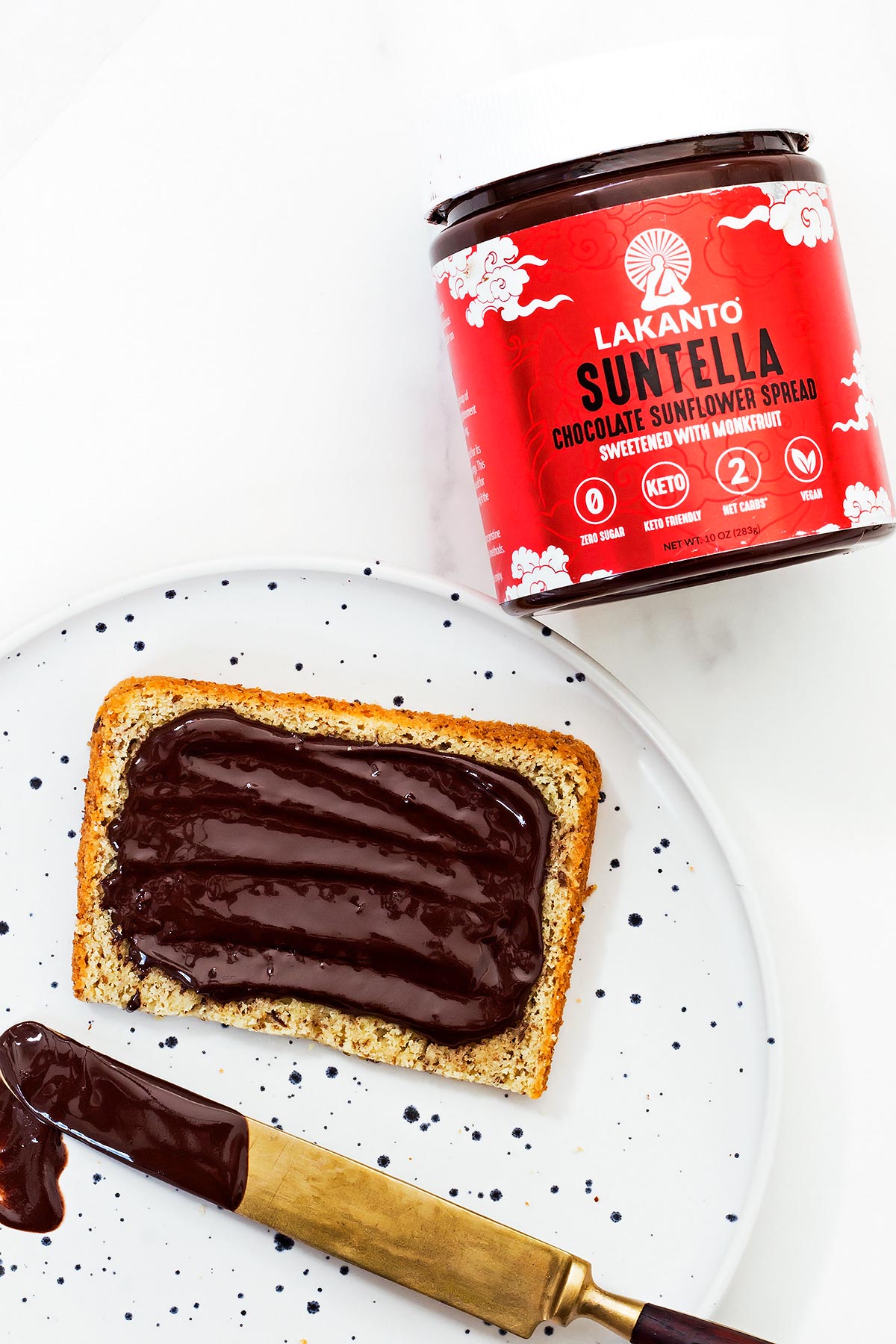
What else can you use it for?
With a sugar-free chocolate spread, the possibilities are endless. You can use it on pancakes, toast, or waffles. Or, you can also use it on fruit like strawberries and bananas. There are so many baked goods I can think about to use this one with.
Best Part
Just like the maple syrup substitute, it also has a risk-free guarantee. If you or your family doesn't like the Suntella spread, then Lakanto will gladly give you a refund. Lastly, this spread is nut-free so you don't have to hide it from your kids who have allergies.
>> Click here to learn more. Current price is $9.99 (save 20% with code LEELA)
Is Lakanto's Sugar Substitute the Best Monk Fruit Sweetener?
Honestly, Lakanto is the first monk fruit sweetener brand I tried. I am happy with the flavor and results in my baked goods. In the 2.5 years since first trying them, I have felt no need to go out and try any other alternative.
That's why I am so confident in recommending them. Furthermore, I appreciate that the company actually has a risk-free satisfaction guarantee. The ingredients are also listed down on the individual pages of the items clearly.
Overall, I am very happy with Lakanto products whenever I need a sugar-free sweetener alternative. I am also excited to see the new products they are consistently rolling out. I will update this post as I try more of their items to add to my pantry or to use in sugar-free recipes.
Common Questions
Yes, monk fruit sweetener is safe for individuals with diabetes. It does not raise blood sugar levels, making it a suitable alternative to sugar. However, it's always recommended to consult with a healthcare professional regarding dietary choices.
Monk fruit sweetener, especially when combined with other ingredients like erythritol, typically does not have a bitter aftertaste. It provides a clean, sweet flavor without any lingering bitterness.
Monk fruit sweetener and stevia are both natural sweeteners with zero or low-calorie content. However, they have slightly different tastes. Monk fruit sweetener has a more subtle, fruity flavor, while stevia can have a slight aftertaste. Personal preference plays a role in determining which sweetener individuals prefer.
Monk fruit sweetener is not suitable for recipes that rely on sugar caramelization, as it does not caramelize like sugar does. It may not provide the same texture or flavor in caramel-based recipes.
Monk fruit sweetener is generally safe for consumption. However, some individuals may experience gastrointestinal discomfort, such as bloating or gas, when consuming excessive amounts of sugar alcohols like erythritol. It's important to consume monk fruit sweetener in moderation and be aware of individual sensitivities.
_ _ _ _ _ _ _ _ _ _ _ _ _
Disclosure: Links in this post are affiliate links. I may earn a small commission if you end up buying through them.
I received a free jar of Suntella to try from Lakanto. I am under no obligation to write about it. All other products I buy with my own money.


Eve Campbell
Too complicated info to navigate
silvana
Hello Regina this is all very interesting. i live in NZ and i can only find the Lakanto sweetener but not the lakanto maple syrup. how can i replace the syrup with the normal granular lakanto sweetener? thank you very much for your time. my first try will be your low carb coconut bread
Regina | Leelalicious
Hi Silvana. Usually liquid sweeteners are about twice as potent as granulated. By that ratio, if using a granulated sweetener instead of syrup in a recipe, you have to double the amount. But just to be safe I would start out with an equal amount and then go by taste. Add more as needed to get to the desired sweetness. It might be that 1.5x is enough.